Key takeaways
- The Chupacabra legend reflects deep-rooted fears and societal changes, becoming a significant part of community identity, especially in Puerto Rico.
- Paranormal research involves blending technology with local stories, highlighting the importance of patience and the unpredictability of evidence collection.
- Documenting encounters reveals the emotional and cultural significance of the legend, showing how personal narratives shape our understanding of the unknown.
- Future research will focus on combining scientific methods with folklore to explore the relationship between legend and reality while encouraging collective exploration.
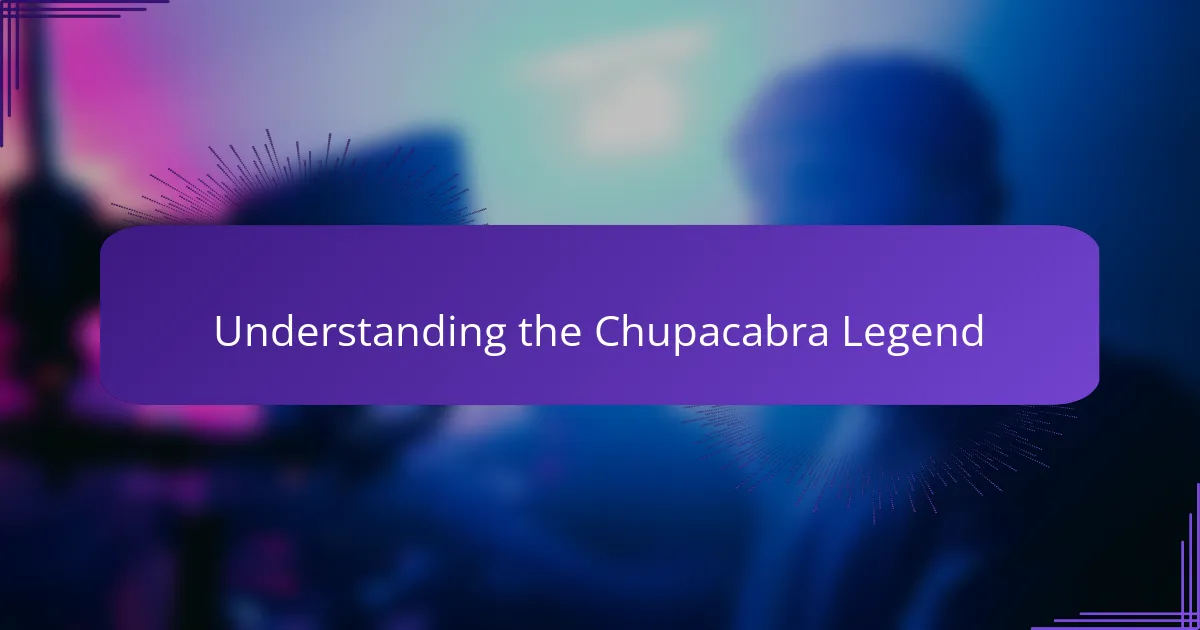
Understanding the Chupacabra Legend
The Chupacabra legend grabbed my attention because it’s unlike any other creature myth I’ve encountered. What fascinates me is how this elusive beast, often described as a vampiric predator draining livestock, taps into deep-rooted fears about the unknown. Have you ever wondered why stories like this persist across cultures and generations?
When I first heard the descriptions—spiky back, alien-like eyes—I couldn’t help but feel a mix of curiosity and unease. It made me question how much of the legend comes from actual sightings and how much is fueled by collective anxiety. This blurred line between reality and imagination is what keeps the Chupacabra story alive and so gripping.
The legend’s power lies in its mystery, and I believe that’s why it resonates so strongly in Puerto Rico. It’s not just about a monster; it’s about a shared narrative that reflects real fears, societal changes, and perhaps even hope for something beyond our understanding. Isn’t it remarkable how a single legend can weave itself into the fabric of a community’s identity?
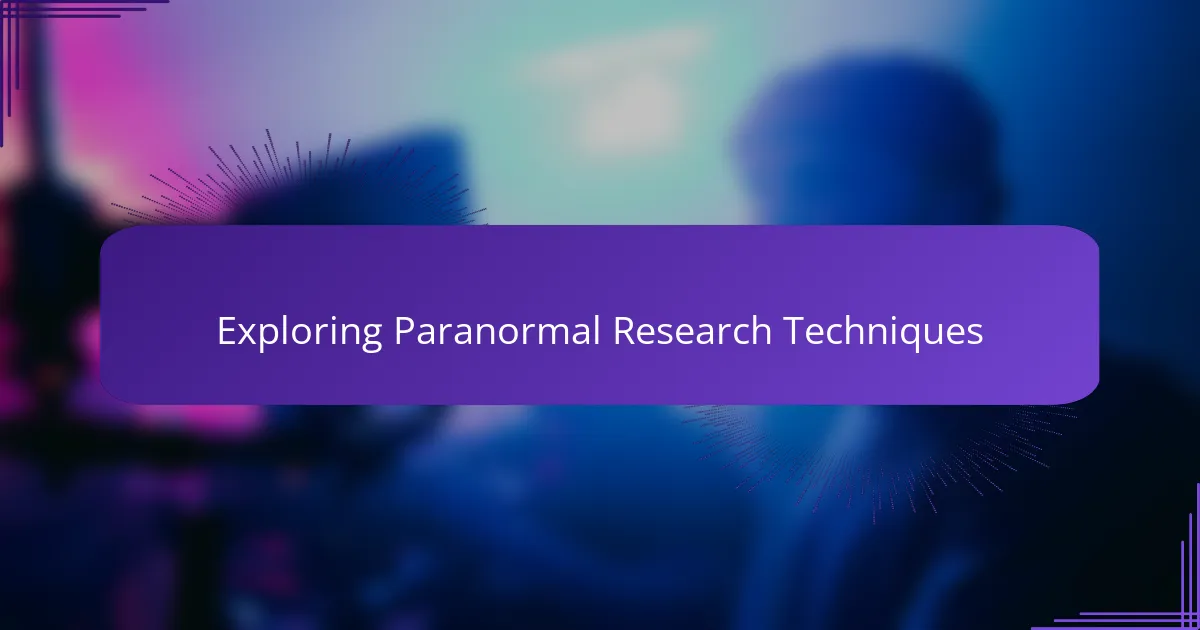
Exploring Paranormal Research Techniques
Diving into paranormal research, I quickly realized that standard scientific methods don’t always apply neatly. For instance, using night-vision cameras and audio recorders became essential tools for capturing anything unusual when the daylight faded. But have you ever tried to stay alert in the dead of night, listening for faint rustles or eerie sounds? I found it both thrilling and mentally exhausting.
What intrigued me most was combining technology with old-school detective work—like interviewing locals whose stories teeter between fact and folklore. This blend of data collection and human insight felt more like piecing together a puzzle than a conventional study. It raised the question: how much can we trust our instruments versus the witnesses themselves?
In my experience, patience is the unsung hero of paranormal research. Sometimes, hours pass with nothing but silence, prompting doubt and frustration. Yet, when a subtle clue finally emerges—a strange noise or an inexplicable shadow—it validates all the waiting. Doesn’t that unpredictability make the chase even more compelling?
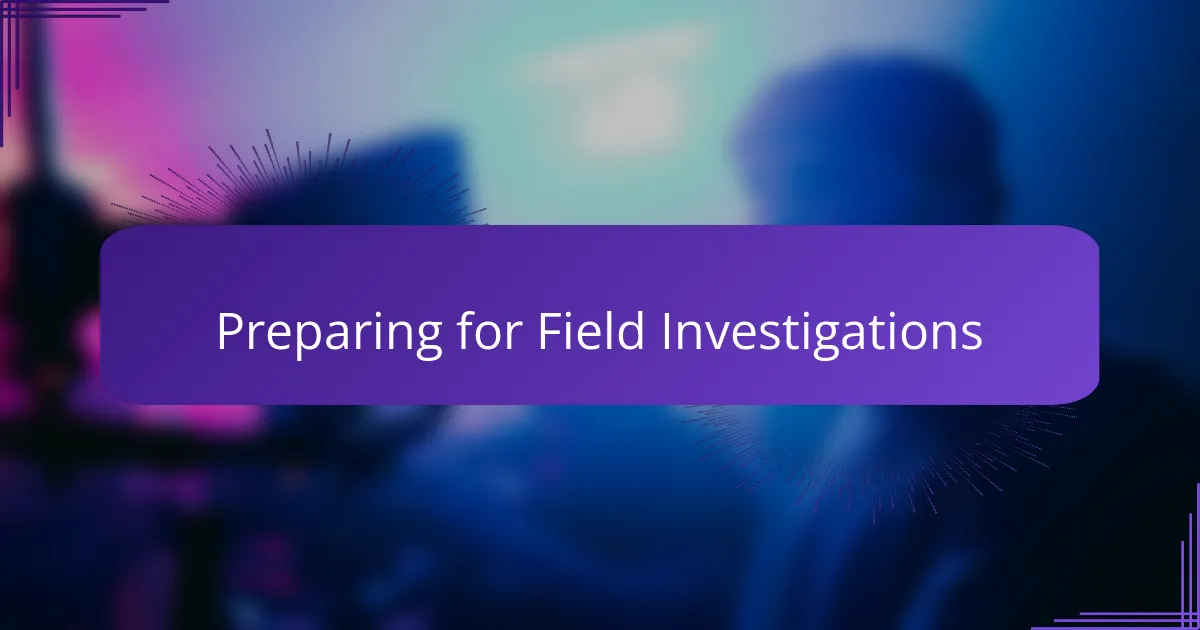
Preparing for Field Investigations
Before I even set foot in the field, I knew preparation was crucial. Packing the right gear—flashlights, batteries, notebooks, and those all-important recording devices—felt like gearing up for an expedition into the unknown. Have you ever triple-checked your equipment, fearing one small oversight might mean missing a vital clue? That tension kept me sharp.
I also spent time studying the local terrain and weather patterns. Understanding how the environment might affect both the creature’s behavior and my ability to investigate was eye-opening. It made me realize that fieldwork isn’t just about chasing legends; it’s about respecting nature’s unpredictability.
Mentally, I had to prepare for long nights filled with uncertainty. The mix of excitement and doubt can be draining, but it’s what keeps the experience real and raw. How often do we push ourselves into discomfort just to catch a glimpse of the extraordinary? For me, that challenge was part of the thrill.
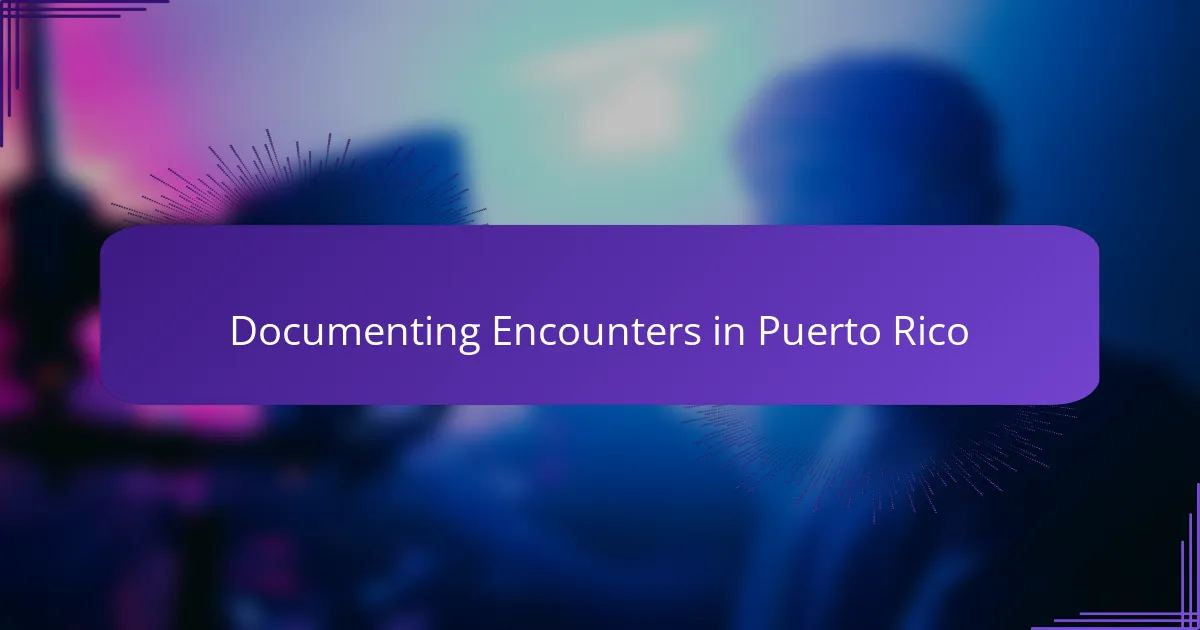
Documenting Encounters in Puerto Rico
Documenting encounters in Puerto Rico was an intense experience that tested my patience and resolve. I vividly recall nights spent perched under starless skies, scribbling frantic notes after interviewing locals who spoke in hushed tones about strange lights or missing livestock. Have you ever felt that mix of skepticism and hope while piecing together stories that seem too wild to be true?
What struck me most was how these encounters weren’t just isolated events but part of a tapestry woven from fear, folklore, and genuine curiosity. One farmer’s vivid account of a creature with glowing eyes stayed with me for days—it wasn’t just the description, but the fear in his voice that made it real. It made me ask: how much do our emotions shape the way we remember and report the paranormal?
In some cases, capturing concrete evidence proved elusive, yet every documented sighting added a new layer to the mystery. Recording these moments felt like building a bridge between legend and reality. Isn’t it fascinating how even the absence of proof can sometimes speak volumes about what’s lurking just beyond our understanding?
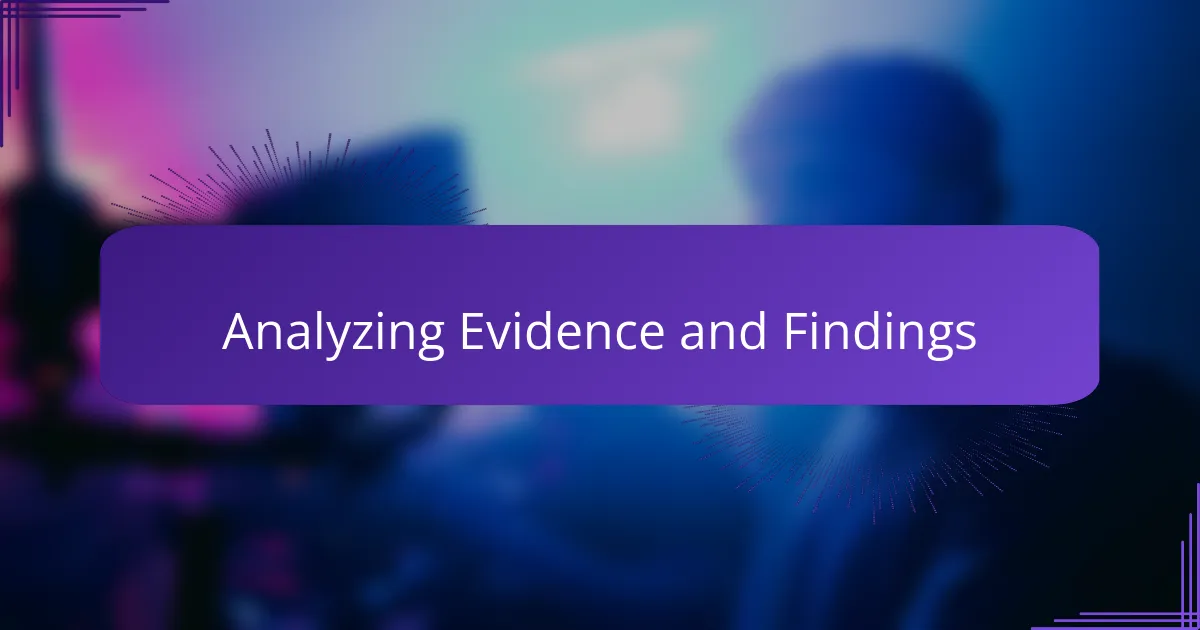
Analyzing Evidence and Findings
Analyzing the evidence I gathered, I realized how much of the so-called proof relied on subjective accounts and grainy photos that begged for interpretation. Have you ever stared at a blurry image, trying to convince yourself it shows something extraordinary? I found myself wrestling with doubt, wondering if I was seeing what I wanted to see.
What stood out most were patterns emerging from different sources—similar descriptions of the creature’s appearance and behaviors across separate reports. This repetition gave me a cautious sense of credibility. Yet, I kept asking: Could these commonalities be a product of shared fears rather than actual encounters?
In moments when physical evidence was scarce, I leaned heavily on consistency and corroboration from multiple witnesses. This approach, while imperfect, felt like piecing together a mosaic from fragmented tiles. It was both thrilling and frustrating to walk that fine line between skepticism and belief.
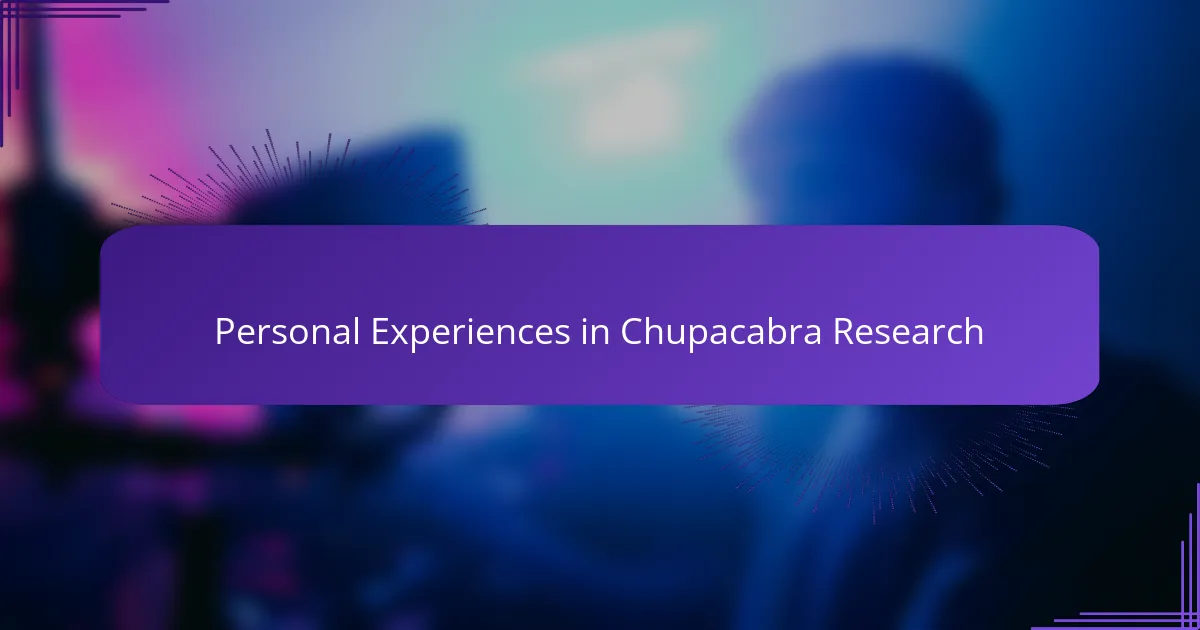
Personal Experiences in Chupacabra Research
Spending nights in rural Puerto Rico, waiting quietly in the darkness, I often felt a strange mix of anticipation and unease. Once, as the wind whispered through the trees, I thought I caught a glimpse of something moving just beyond my flashlight’s beam—was it the Chupacabra, or simply my mind playing tricks on me? Moments like these made the research feel deeply personal, where every shadow could hold a story waiting to be uncovered.
I remember the farmers’ faces vividly, their voices lowering when they recounted strange experiences. Their fear was palpable, yet there was also a sense of hope that the legend might explain the inexplicable losses they faced. Listening to them, I realized that researching the Chupacabra wasn’t just about finding physical evidence—it was about understanding a collective human experience shaped by mystery and anxiety.
There were times when frustration crept in, especially after long nights yielded only silence. But then, a sudden noise or an unexplained glimpse reignited my determination. Doesn’t that unpredictable dance between doubt and discovery make the pursuit so compelling? For me, these personal ups and downs became the heartbeat of the entire investigation.
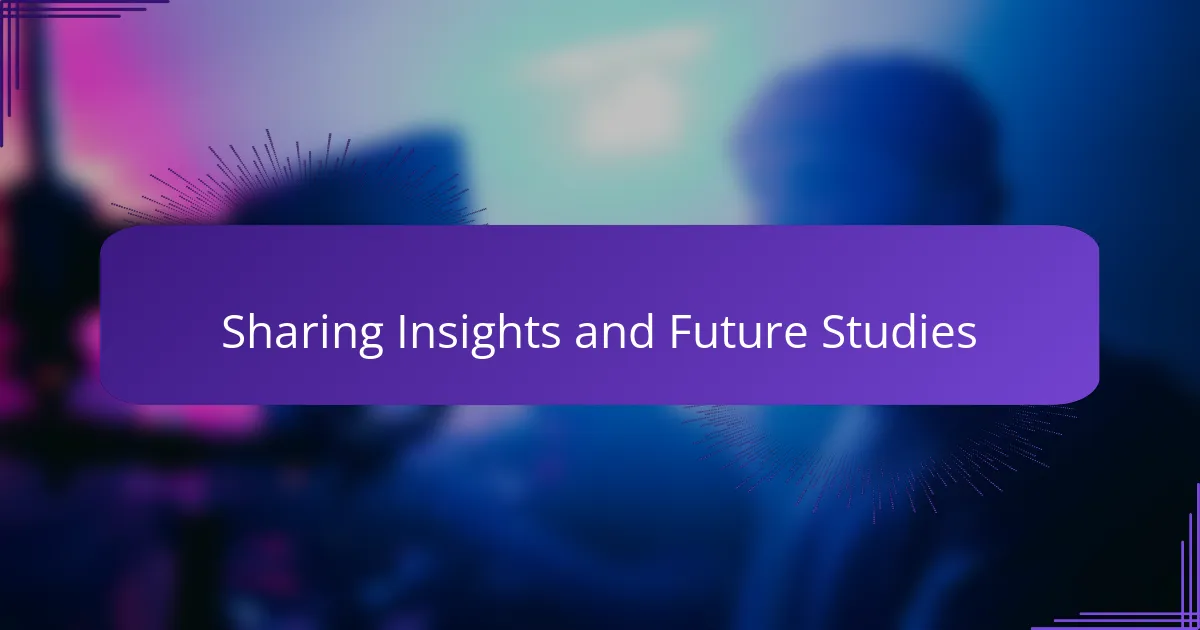
Sharing Insights and Future Studies
Sharing what I learned during this journey feels essential—not just to shed light on the Chupacabra myth, but to invite others into this unfolding mystery. I found that discussing my findings with locals and fellow enthusiasts sparked new questions and fresh perspectives I hadn’t considered before. Have you ever noticed how sharing experiences can transform a solitary pursuit into a collective exploration?
Looking ahead, I’m keen to dive deeper with more advanced tech and longer field sessions, hoping to capture evidence that goes beyond hearsay. What intrigues me most is combining scientific rigor with local folklore to build a richer picture. Could future studies finally bridge the gap between legend and reality, or will the Chupacabra remain an enduring enigma?
For me, maintaining an open mind is key. I plan to collaborate with experts from various fields—biologists, folklorists, even psychologists—to unravel how much of this phenomenon is rooted in nature, culture, or pure imagination. Isn’t the greatest insight sometimes the realization that the story itself evolves as much as the search for answers?